Welcome to the future of living! Smart home technology is rapidly transforming our daily lives, offering unparalleled convenience, efficiency, and security. But before you dive into the exciting world of connected devices, a well-thought-out smart home planning guide is crucial. This comprehensive smart home pre-installation checklist will help you navigate the complexities, ensuring a seamless and satisfying home automation experience. Without proper planning, integrating smart devices can lead to compatibility issues, network frustrations, and unexpected costs. This guide is your essential first step to building a truly intelligent home.

The global smart home market is experiencing exponential growth, reflecting a significant shift in how we interact with our living spaces. Valued at USD 121.59 billion in 2024, it’s projected to skyrocket to USD 633.20 billion by 2032, exhibiting a compound annual growth rate (CAGR) of 23.1% from 2025 to 2032. [9] This surge is also evident in adoption rates, with more than 43% of U.S. households, or 58.4 million homes, estimated to have smart homes by 2025. This guide will help you understand what to consider before smart home automation, ensuring you’re part of this exciting trend with confidence.
Why a Smart Home Planning Guide is Essential
Embarking on a smart home journey without a clear plan is akin to building a house without blueprints. A robust smart home planning guide helps you avoid common pitfalls, such as incompatible devices, network bottlenecks, or security vulnerabilities. It ensures that your smart home system works cohesively, delivers the desired benefits, and is ready for future expansions. By addressing key considerations upfront, you can maximize your investment and create a truly intuitive and efficient living environment.
Smart homes offer a multitude of benefits, from enhanced comfort to significant energy savings. For instance, smart thermostats can save users an average of 8% on their annual energy bill. Beyond efficiency, safety is a primary driver for many, with 51% of consumers considering smart home devices citing safety as their primary reason for purchase.
Setting Your Smart Home Vision: What Do You Want Your Smart Home to Do?
The first step in any home automation planning guide is to define your objectives. What specific problems do you want to solve, or what conveniences do you wish to introduce? This clarity will dictate what should be in a smart home and what devices were used in the home to achieve those goals. Consider different areas of your home and how smart technology could enhance them:
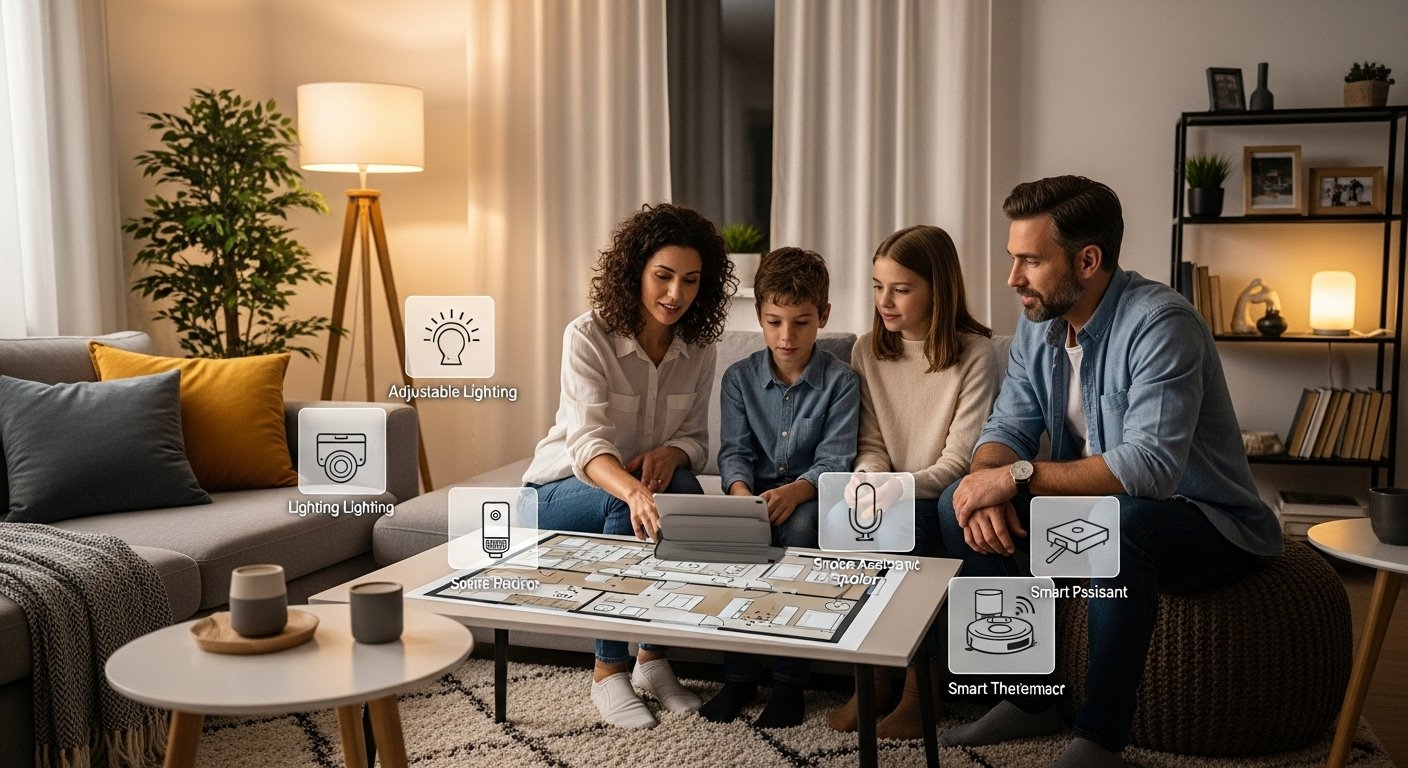
Begin with a few key areas that will make the biggest impact on your daily life, rather than trying to automate everything at once. This approach makes the process less overwhelming and more manageable, offering excellent home automation planning tips.
The Smart Home Pre-Installation Checklist: Compatibility and Ecosystems
One of the most critical aspects of smart home planning is ensuring Device Compatibility. The market is filled with various brands and technologies, and not all devices play well together. This is where smart home compatibility considerations become paramount.
Choosing Your Smart Home Ecosystem
At the heart of most integrated smart homes is a Smart Home Hub. This central controller acts as a translator, allowing different devices to communicate with each other, even if they use different Communication Protocols. Common protocols include:
Your choice of ecosystem often revolves around your preferred Voice Assistants, such as Amazon Alexa, Google Assistant, or Apple Siri. These assistants offer convenient voice control over your smart devices and often have their own smart home hubs or integrated platforms. Considering your existing tech preferences can simplify your smart home ecosystem choice. For a deeper understanding of how these systems work, explore How Does Smart Home Work Guide.
Device Compatibility Considerations
Beyond the hub and protocols, it’s essential to check if individual devices are compatible with your chosen ecosystem. Look for explicit mentions of integration with major platforms (e.g., “Works with Alexa,” “Compatible with Google Home,” “HomeKit enabled”). Research online communities and product reviews for real-world experiences regarding cross-brand integration. This proactive approach ensures that when you ask, “Is it compatible with other devices?” the answer is a confident yes.
Smart Home Network Requirements: Is Your Wi-Fi Up to the Challenge?
A reliable and robust Wi-Fi network is the backbone of any smart home. Without it, even the best smart devices will underperform or fail. This critical section of your smart home planning guide addresses: Is your Wi-Fi up to the challenge? And, do you have a strong Wi-Fi signal in all rooms?
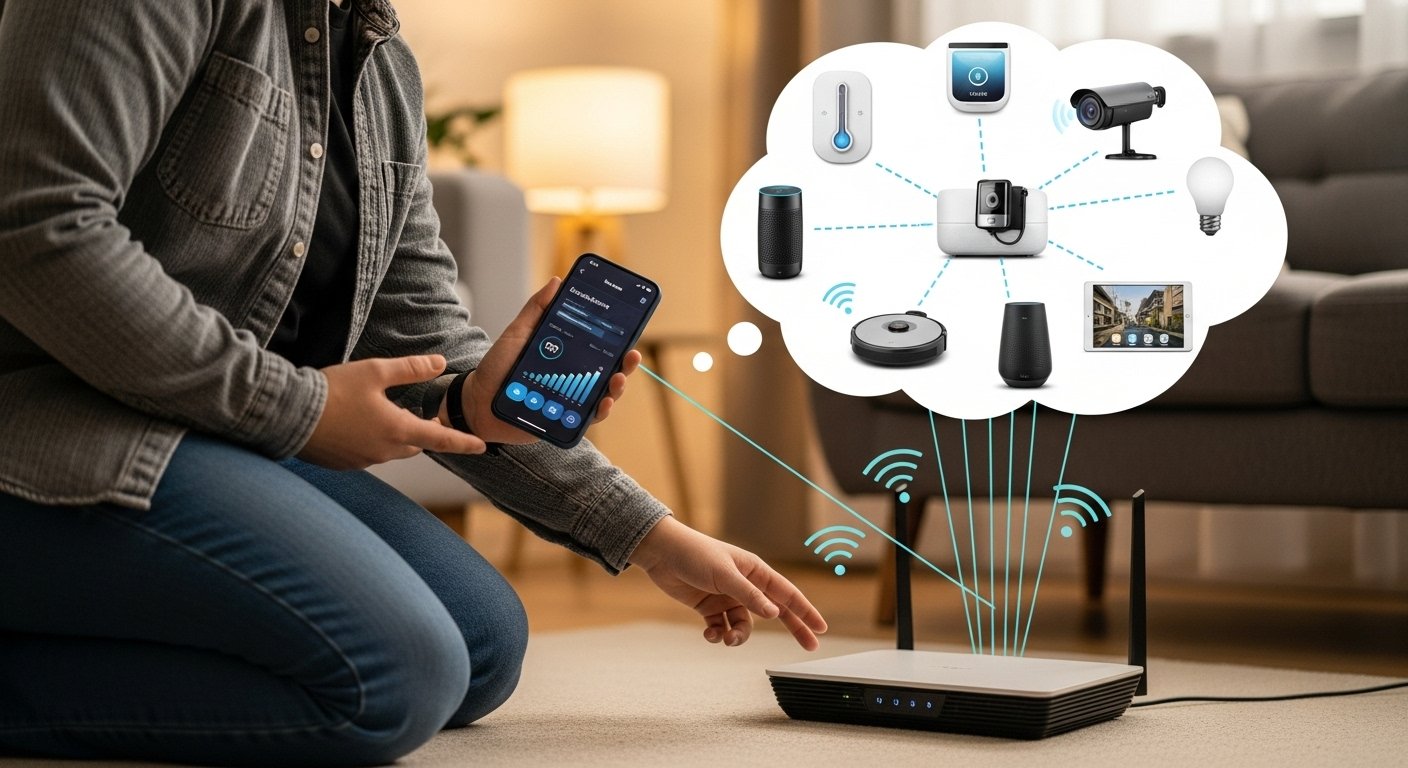
Your Internet Service Provider (ISP) and Wi-Fi Network Strength play a pivotal role. Smart devices, especially those streaming video (like security cameras), consume significant bandwidth. Consider the following:
Smart Home Budget Planning: How Big is Your Budget?
Understanding your financial limitations is a crucial step in your smart home planning guide. “How big is your budget?” is not just about the initial purchase price of devices, but also about potential ongoing costs and future expansions. Developing a realistic smart home budget planning strategy helps you make informed decisions and prioritize your investments.
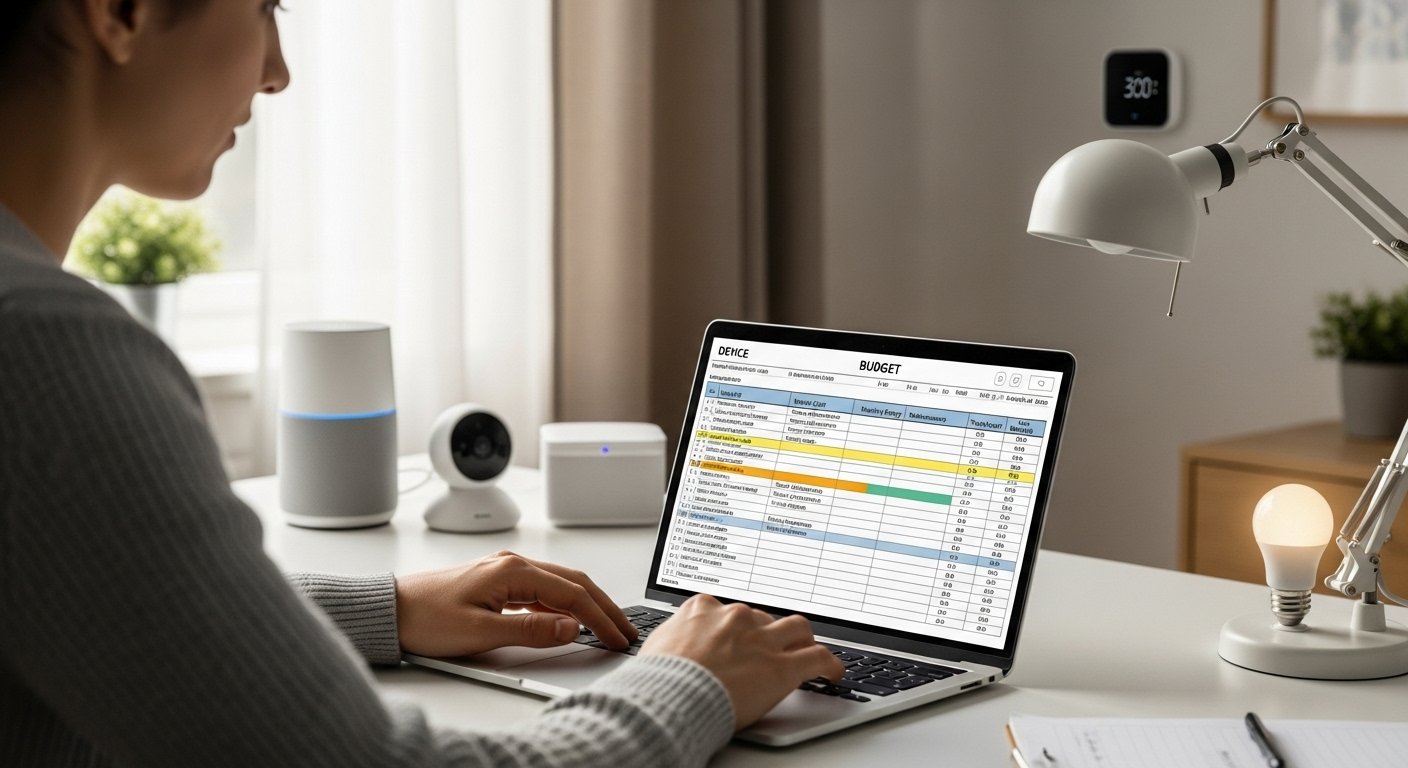
Start small and expand incrementally. This allows you to test devices, understand what works best for your home, and spread out the financial investment. You don’t need to automate your entire home at once. Consider this a smart home starter guide to phased implementation.
Smart Home Security Integration: Protecting Your Digital Home
As smart homes become more interconnected, the importance of robust smart home security integration and Data Privacy & Cybersecurity cannot be overstated. With 57% of Americans expressing worry about how their information is collected and used, and 46% fearing potential hacking of their smart home systems, this is a significant concern for consumers. [2, 7, 11]
For more information on securing your connected environment, you can refer to resources like the National Institute of Standards and Technology (NIST) on smart home privacy and security. [2]
Future-proofing Your Smart Home: Scalability and Longevity
Technology evolves rapidly, and your smart home planning guide should account for this. Consider the Scalability and Future-proofing of your system. Choosing an ecosystem that supports open standards and has a strong developer community will provide more flexibility as new devices and technologies emerge.
Smart Home Wiring Considerations: Beyond Wireless
While many smart devices rely on wireless connectivity, there are instances where smart home wiring considerations come into play. For new constructions or major renovations, planning for wired connections (like Ethernet for a Smart Home Hub or certain high-bandwidth devices) can offer greater reliability and speed, reducing dependence on Wi-Fi for critical components. However, for most existing homes, a robust wireless setup with appropriate Wi-Fi extenders or mesh systems will suffice for the smart home essentials list.
Home Automation Planning Tips & Smart Home Starter Guide
As you embark on your smart home journey, here are some practical home automation planning tips and a smart home starter guide to help you get started:
For more specific guidance on getting started, refer to our Home Automation for Beginners: Smart Steps guide. You might also find our recommendations on 5 Must-Have Smart Home Devices helpful for building your smart home essentials list.
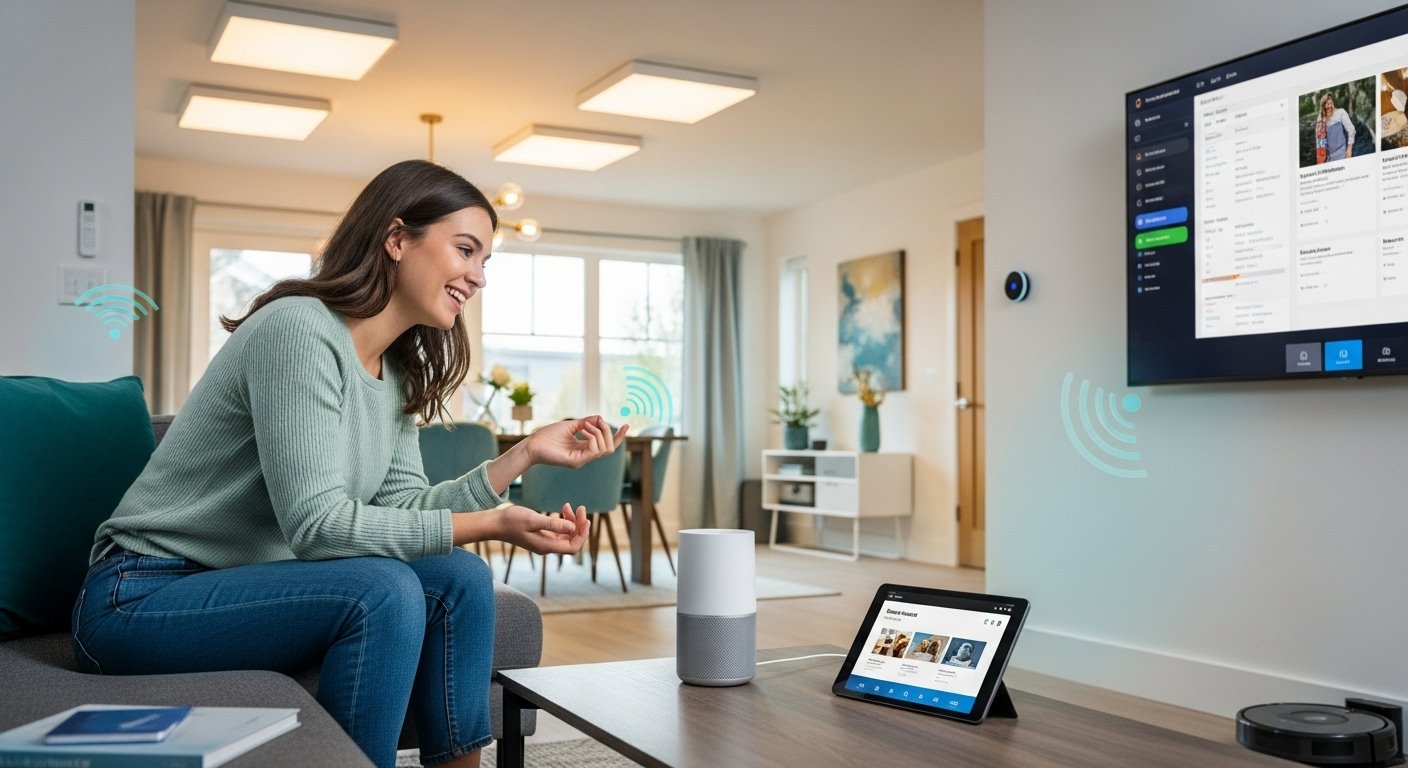
Key Takeaways
- A comprehensive smart home planning guide is crucial before purchasing devices to ensure compatibility, security, and scalability.
- Define your smart home vision and prioritize functionalities like lighting, climate, security, and entertainment.
- Choose a smart home ecosystem and communication protocols (Zigbee, Z-Wave, Wi-Fi, Thread, Matter) that support cross-brand device compatibility.
- Assess your Wi-Fi network strength and speed to ensure it can support all your smart devices.
- Develop a realistic smart home budget planning strategy, considering initial costs, installation, and potential monthly fees.
- Prioritize Data Privacy & Cybersecurity by securing devices, networks, and using strong passwords and 2FA.
- Future-proof your smart home by focusing on open standards and a modular approach.
- Start with a few essential devices and expand gradually, leveraging a smart home starter guide approach.
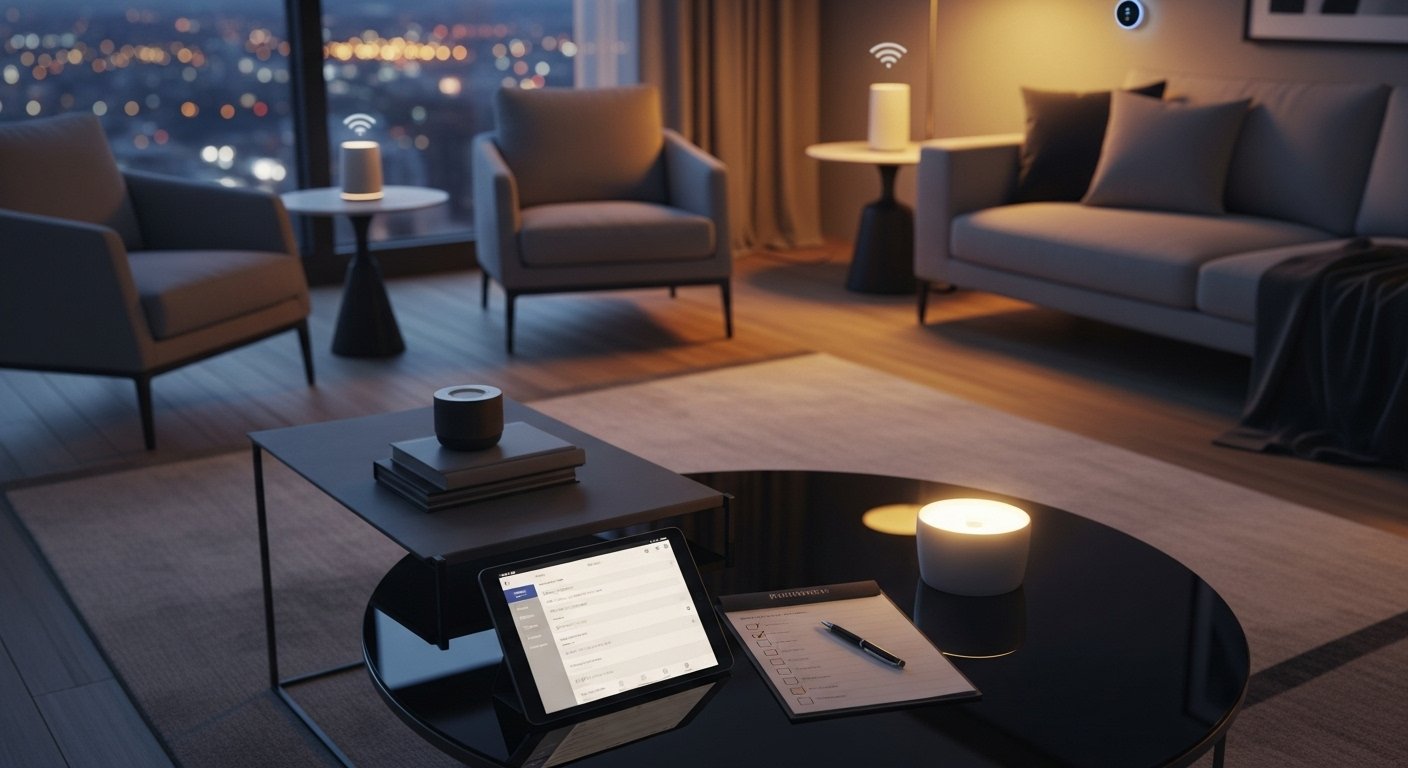
Leave a Reply